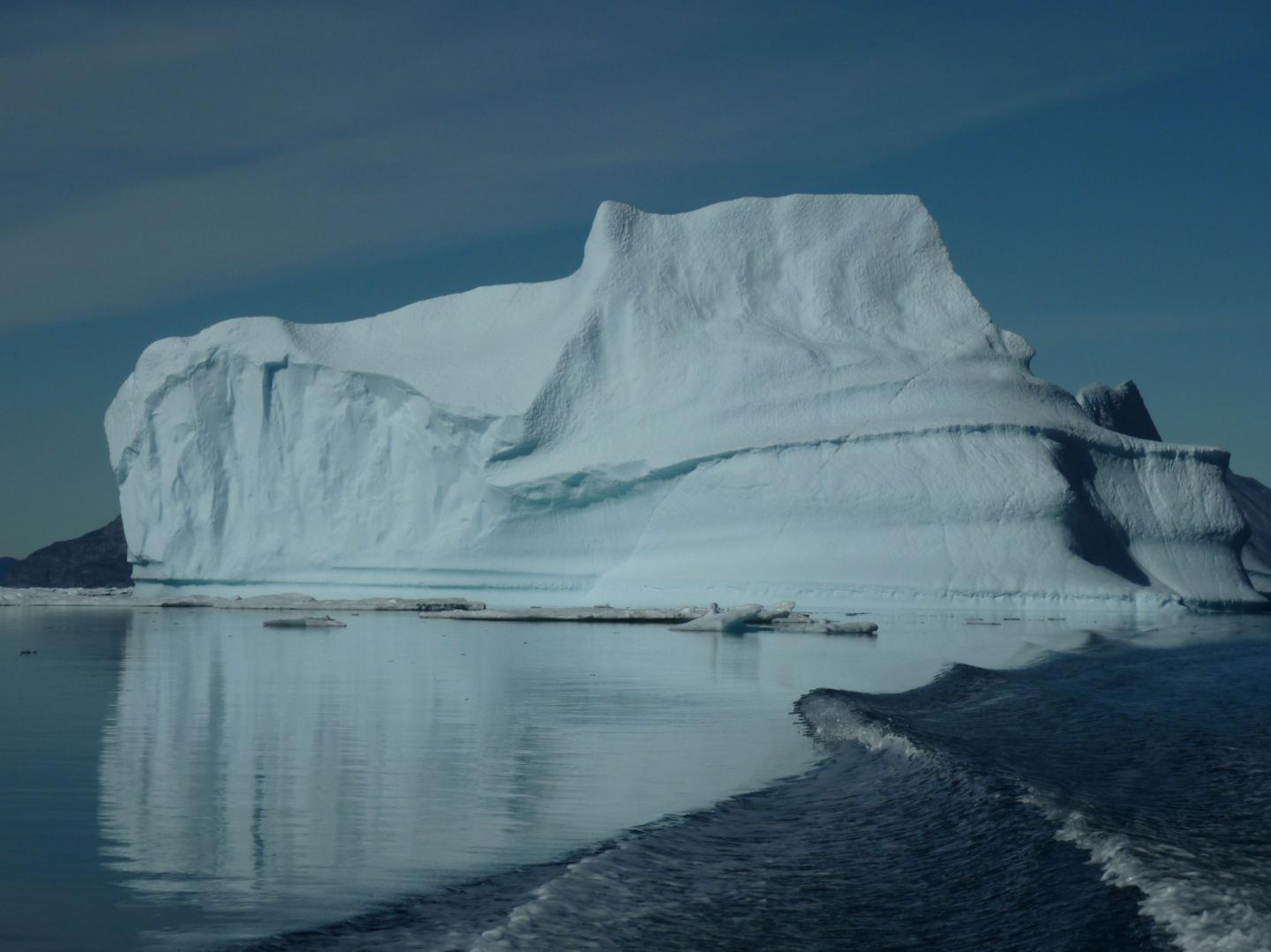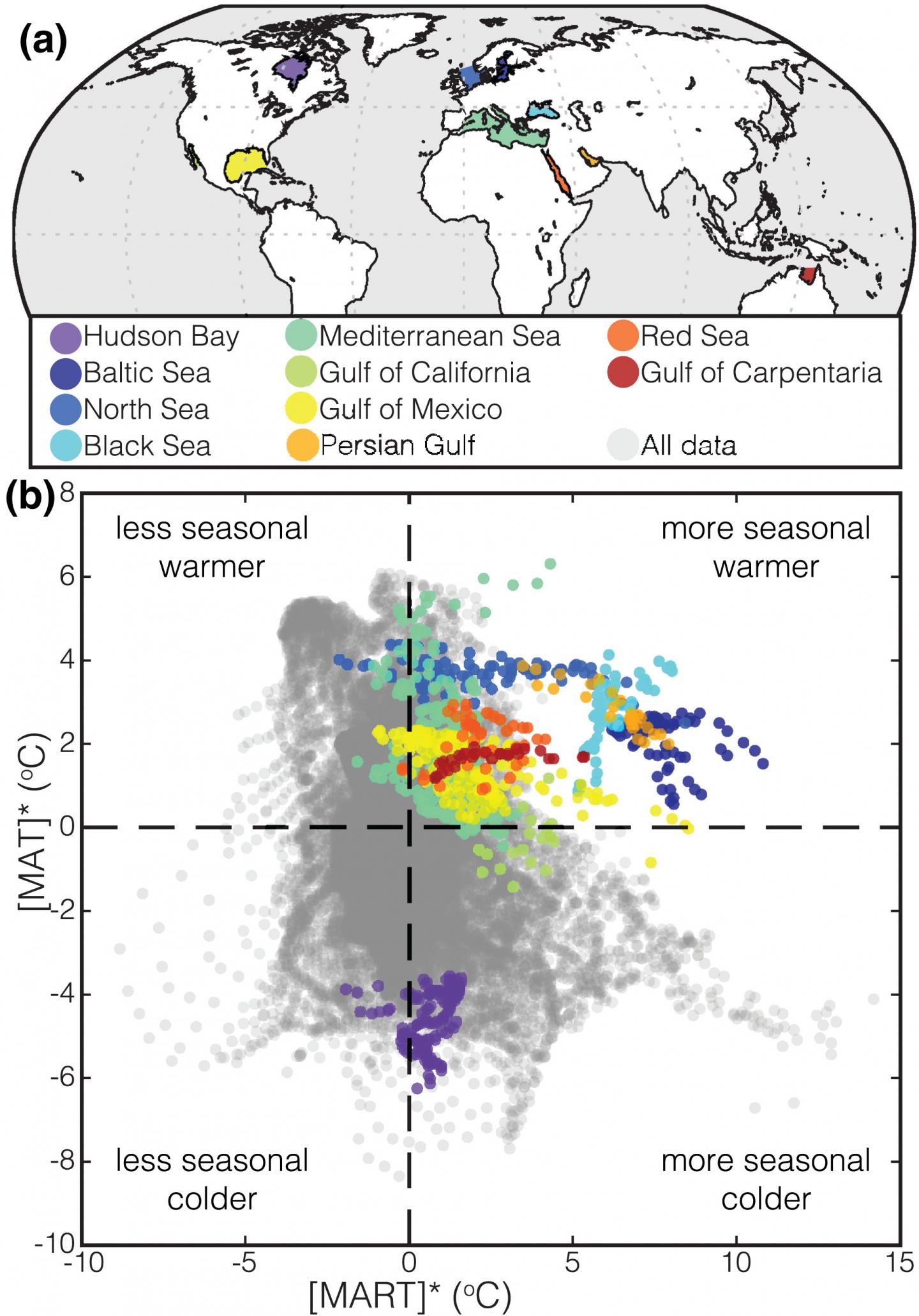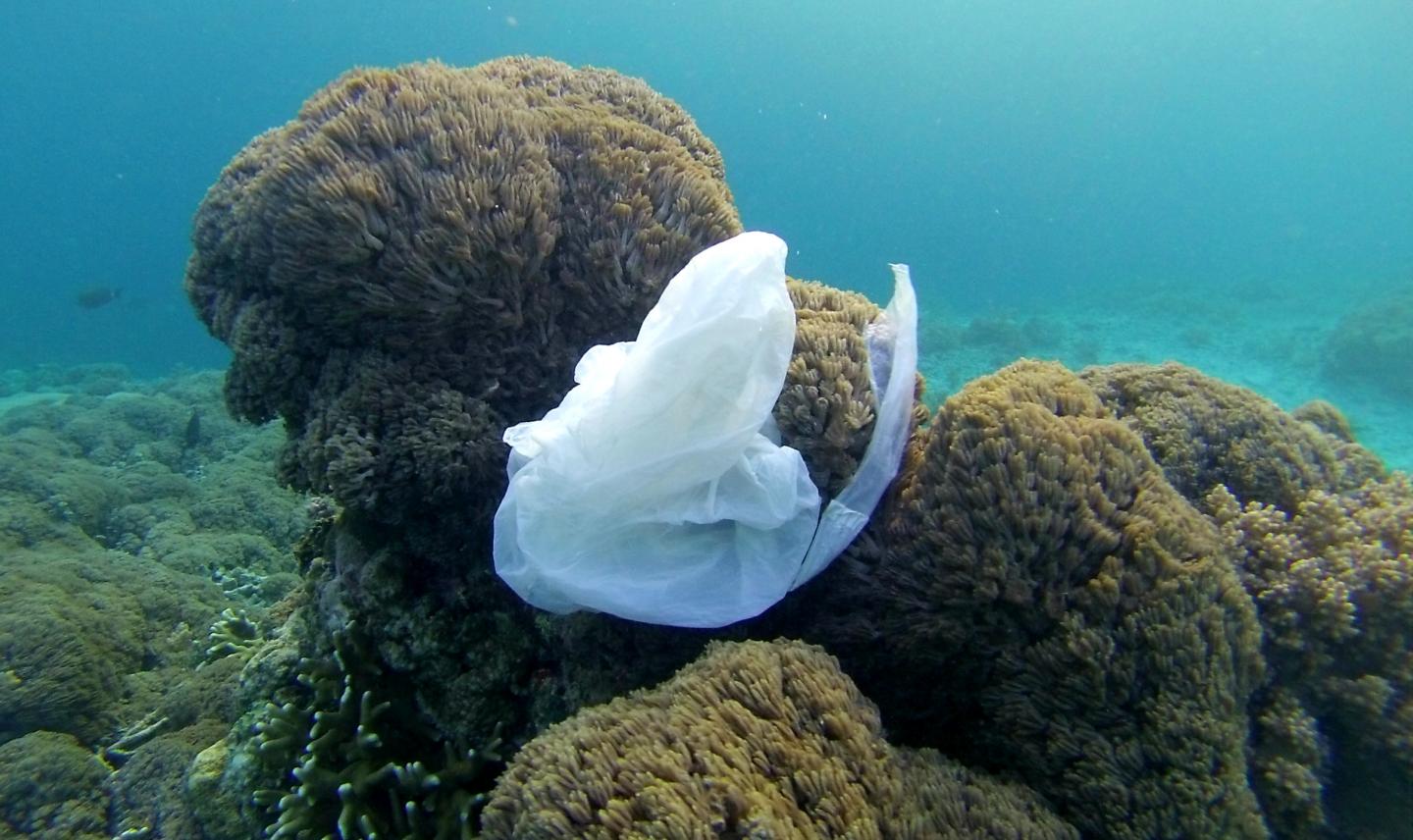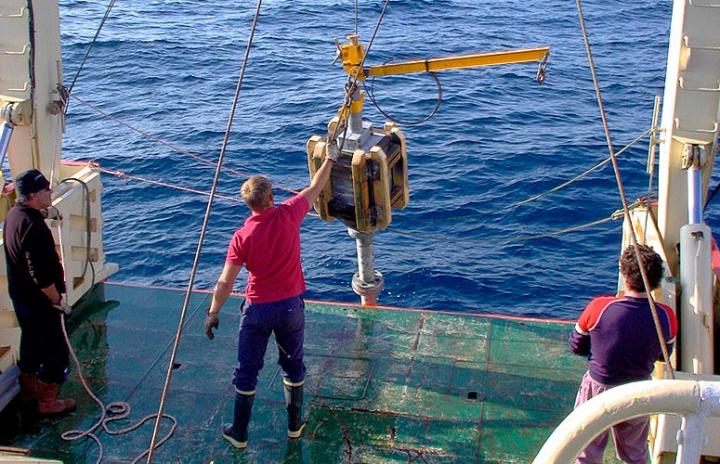Ice is melting at a surprisingly fast rate underneath Shirase Glacier Tongue in East Antarctica due to the continuing influx of warm seawater into the Lützow-Holm Bay. Hokkaido University scientists have identified an atypical hotspot of sub-glacier melting in East Antarctica.…
Tag: OCEANOGRAPHY
Nooks, crannies and critters
Researchers develop new way to measure complexity of habitats
Researchers link end of Green Sahara with SE Asia megadrought
Previously unknown mid-Holocene event led to major changes in human settlement
Research links Southeast Asia megadrought to drying in Africa
Previously unknown mid-Holocene event led to major changes in human settlement, according to findings from University of California, Irvine, University of Pennsylvania and William Paterson University
Nutrients make coral bleaching worse
A new study shows nutrients can aggravate the already negative effects of climate change on corals to trigger mass coral bleaching. Coral reef environments are typically low in naturally occurring nutrients such as nitrogen and phosphorous compounds. But ocean currents…
Arctic ocean moorings shed light on winter sea ice loss
The eastern Arctic Ocean’s winter ice grew less than half as much as normal during the past decade, due to the growing influence of heat from the ocean’s interior, researchers have found. The finding came from an international study led…
Greenland ice sheet shows losses in 2019
AWI researchers confirm record ice losses in Greenland in 2019 based on data from the GFZ/NASA satellite mission GRACE Follow-On
Larger variability in sea level expected as Earth warms
A team of researchers from the University of Hawai’i (UH) at Mānoa School of Ocean and Earth Science and Technology (SOEST) identified a global tendency for future sea levels to become more variable as oceans warm this century due to…
Seafood could account for 25% of animal protein needed to meet increases in demand
CORVALLIS, Ore. – Policy reforms and technological improvements could drive seafood production upward by as much as 75% over the next three decades, research by Oregon State University and an international collaboration suggests. The findings, published today in Nature ,…
The tropics are expanding, and climate change is the primary culprit
WASHINGTON–Earth’s tropics are expanding poleward and that expansion is driven by human-caused changes to the ocean, according to new research. The tropics wrap around Earth’s middle like a warm, wet belt. This part of the globe gets the most direct…
Native Hawaiian tiger cowries eat alien invasive species
Researchers at the University of Hawai’i (UH) at Mānoa’s Hawai?i Institute of Marine Biology (HIMB) have just discovered that the Hawaiian tiger cowrie (Leho-kiko in Hawaiian) is a voracious predator of alien sponges such as the Orange Keyhole sponge, which…
The Marine Technology Society announces its 2020 award recipients
Recognizing engineers, scientists, technologists, policy-makers, educators, and students who have made a significant impact on the profession or in their community
There is at least 10 times more plastic in the Atlantic than previously thought
The mass of ‘invisible’ microplastics found in the upper waters of the Atlantic Ocean is approximately 12- 21 million tonnes, according to research published in the journal Nature Communications today. Significantly, this figure is only for three of the most…

New research reveals effect of global warming on Greenland ice melt
New analysis of almost 30 years’ worth of scientific data on the melting of the Greenland Ice Sheet predicts global sea level rise of at least 10 centimetres by the end of the 21st Century if global warming trends continue.
Why aren’t sea trout thriving anymore?
Populations of this once-common fish species are in decline. Pathogens may be part of the reason.
New study reveals strength of the deep ocean circulation in the South Atlantic
Researchers describe circulation variability in deep currents linked to climate and weather
Stanford researchers develop new way to study ocean life
Rotating microscope could provide a new window into secrets of microscopic life
More than half of world’s oceans already being affected by climate change
First estimate of the point at which areas of the world’s oceans will show evidence of the impacts of climate change
Effects of nutrient pollution in marine ecosystems are compounded by human activity
Review highlights that negative effects of nutrients from human activities in marine ecosystems are exacerbated by other factors such as climate change

Reconstructing global climate through Earth’s history
A key component when forecasting what the Earth’s climate might look like in the future is the ability to draw on accurate temperature records of the past.
Strianassa lerayi anker, new shrimp species from Panama’s Coiba national park
John Steinbeck wrote Log From the Sea of Cortez in 1951, his chronicle of an expedition with marine biologist Ed Ricketts along the coast of California and Mexico. Ricketts named several of the many new marine animals they found after…
Reconstructing global climate through Earth’s history
A key component when forecasting what the Earth’s climate might look like in the future is the ability to draw on accurate temperature records of the past. By reconstructing past latitudinal temperature gradients (the difference in average temperature between the…
Researchers identify human influence as key agent of ocean warming patterns in the future
The oceans play an important role in regulating our climate and its change by absorbing heat and carbon. The implications of their results, published today in Nature , are significant because regional sea level, affecting coastal populations around the world,…
Discovery transforms understanding of hydrogen depletion at the seafloor
Scientists analyzing hydrothermal fluid from Piccard vents at Mid-Cayman Rise find non-biological processes deplete hydrogen that was thought to be readily available to subseafloor microbial communities; discovery could impact global hydrogen budget
Subpolar marginal seas play a key role in making the subarctic Pacific nutrient-rich
A group of researchers from three Japanese universities has discovered why the western subarctic Pacific Ocean, which accounts for only 6 percent of the world’s oceans, produces an estimated 26 percent of the world’s marine resources. Japan neighbors this ocean…
Deep-sea misconceptions cause underestimation of seabed-mining impacts
A new publication on the impacts of deep-seabed mining by 13 prominent deep-sea biologists, led by University of Hawai’i at Mānoa oceanography professor Craig Smith, seeks to dispel scientific misconceptions that have led to miscalculations of the likely effects of…
Researchers find link between Atlantic hurricanes and weather system in East Asia
With a new Atlantic hurricane season in full swing, scientists may have found a new influence on how tropical cyclones develop. Researchers led by the University of Iowa have identified a connection between a climate system in East Asia and…
Predicting drought in the American West just got more difficult
People hoping to get a handle on future droughts in the American West are in for a disappointment, as new USC-led research spanning centuries shows El Niño cycles are an unreliable predictor. Instead, they found that Earth’s dynamic atmosphere is…
Impact of climate change on tropical fisheries would create ripples across the world
Tropical oceans and fisheries are threatened by climate change, generating impacts that will affect the sustainable development of both local economies and communities, and regions outside the tropics.
Mix of contaminants in Fukushima wastewater, risks of ocean dumping
Nearly 10 years after the Tohoku-oki earthquake and tsunami devastated Japan’s Fukushima Dai-ichi Nuclear Power Plant and triggered an unprecedented release radioactivity into the ocean, radiation levels have fallen to safe levels in all but the waters closest to the…
Speaker Change: International Year of Sound Events Explore Acoustics from Steelpan Music to Oceanography
The Acoustical Society of America continues to host virtual events in August as part of the International Year of Sound. The ASA Student Council will host Virtual Student Summer Talks for science students to present their research on topics ranging from acoustical oceanography to speech communication and Andrew Morrison will discuss how the acoustical physics of the steelpan helps machine learning algorithms process large datasets. All events are open to the public, and admission is free.
Algal symbiosis could shed light on dark ocean
New research has revealed a surprise twist in the symbiotic relationship between a type of salamander and the alga that lives inside its eggs. A new paper in Frontiers in Microbiology reports that the eggs compete with the algae to…
Life at its limits
Microbes in the seabed survive on far less energy than has been shown ever before
New study reveals lower energy limit for life on Earth
An international team of researchers led by Queen Mary University of London have discovered that microorganisms buried in sediment beneath the seafloor can survive on less energy than was previously known to support life. The study has implications for understanding…

Surface clean-up technology won’t solve ocean plastic problem
Clean-up devices that collect waste from the ocean surface won’t solve the plastic pollution problem, a new study shows.
Surface clean-up technology won’t solve ocean plastic problem
Clean-up devices that collect waste from the ocean surface won’t solve the plastic pollution problem, a new study shows. Researchers compared estimates of current and future plastic waste with the ability of floating clean-up devices to collect it – and…
Improving the monitoring of ship emissions
German-French research team is developing new sensor network
New method lets scientists peer deeper into ocean
Researchers have advanced a new way to see into the ocean’s depths, establishing an approach to detect algae and measure key properties using light. A paper published in Applied Optics reports using a laser-based tool, lidar, to collect these measurements…
North Atlantic climate far more predictable following major scientific breakthrough
A team of scientists, led by UK Met Office, has achieved a scientific breakthrough allowing the longer-term prediction of North Atlantic pressure patterns, the key driving force behind winter weather in Europe and eastern North America. CMCC scientists Panos Athanasiadis…

Decreased iron levels in seawater make mussels loosen their grip
Researchers reporting in Environmental Science & Technology have shown that mussels form weaker attachments in iron-deficient seawater, revealing a possible consequence of altered iron bioavailability in oceans.
Decreased iron levels in seawater make mussels loosen their grip
Mussels secrete sticky plaques that help them attach to wet surfaces, such as rocks on the beach. These adhesive structures are rich in iron, which is thought to help make the attachments strong yet flexible. Now, researchers reporting in Environmental…
Newer PFAS compound detected for first time in Arctic seawater
Per- and polyfluoroalkyl substances (PFAS), found in many household products and food packages, have raised concerns because of their persistence and possible toxicity to people and wildlife. Because the compounds don’t break down naturally, they have become environmental contaminants. Now,…

International Year of Sound Events Explore Acoustics from Sounds of the Sacred to Oceanography
The Acoustical Society of America continues to host virtual events in August as part of the International Year of Sound. The ASA Student Council will host Virtual Student Summer Talks for science students to present their research on topics ranging from acoustical oceanography to speech communication and David Carreon Bradley will discuss how sounds in religious spaces are essential to the worship experience. All events are open to the public, and admission is free.

Ocean features and changes in the past are explored to anticipate future climate
The climate represents the set of atmospheric conditions that characterize a region. Yet these conditions are the result of global interaction between dry land, vegetation, ice, atmosphere and ocean.
Coral reefs show resilience to rising temperatures
Rising ocean temperatures have devastated coral reefs all over the world, but a recent study in Global Change Biology has found that reefs in the Eastern Tropical Pacific region may prove to be an exception. The findings, which suggest that…
Climate predictions several years into the future?
A study from Kiel reveals potential and mechanisms
Discovery of first active seep in Antarctica provides new understanding of methane cycle
CORVALLIS, Ore. – The discovery of the first active methane seep in Antarctica is providing scientists new understanding of the methane cycle and the role methane found in this region may play in warming the planet. A methane seep is…
What happens in Vegas, may come from the Arctic?
New study from UNLV climate scientist Matthew Lachniet links Arctic and tropical Pacific warming to ancient climate records, providing parallels to today.
Florida harmful algal blooms produce multiple toxins detrimental to human health
Cyanobacterial blooms released downstream from Lake Okeechobee coincided with red tides placing Florida’s west coast in a toxic vice
Baleen whales have changed their distribution in the Western North Atlantic
Researchers have been using passive acoustic recordings of whale calls to track their movements.